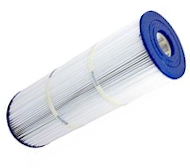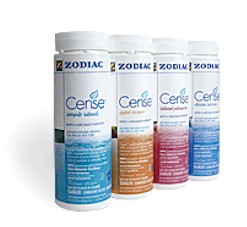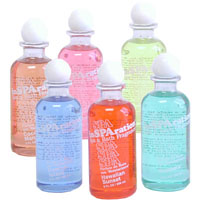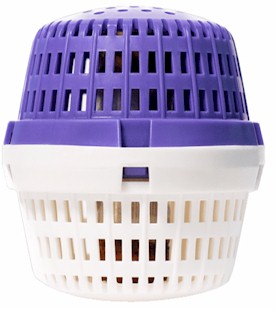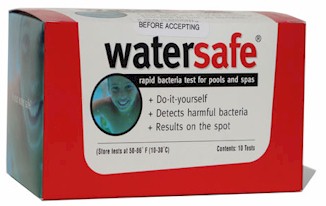|
|
269-978-1983
|
| |
|
|
|
|
|
|
|
|
|
|
|
|
|
|
Popular Products:
|
|
|
|
|
|
|
|
|
|
|
| |
|
Swimming Pool and Hot Tub Water:Problems with High or Low Sanitation
Proper sanitation is necessary in your pool or hot tub to prevent the growth of harmful bacteria, and to keep that water sparkling clean.
Swimming pool contaminants are introduced to your water through swimmers and environmental sources. Common environmental contaminants are dirt, debris, rain (which can harbor algae spores), and droppings from birds. Contaminants from swimmers can be sweat, cosmetics, saliva, lotion, and the occasional "accident" from your younger bathers.
Minimizing Contaminants
A well-maintained filtration and sanitizing system is the best way to combat these contaminants from taking over in your water (this page will address the sanitizing aspect (for information on filtration, please see our Filter Page). Contamination can be further minimized by having bathers shower before entering the water, or not letting children with intestinal sicknesses swim.
Am I using too much or too little sanitizer?
Maintaining a proper concentration of sanitizer (between 1 and 3 Parts per Million) is crucial in assuring the safety of bathers. It is equally important to keep the pH between 7.2 and 7.8 - otherwise the power of your sanitizer will be greatly reduced. Routing maintenance and testing is necessary to make sure your water stays safe for bathers. You can use the Aqua Chek Tru-Test Digital Test Strip Reader to test for your pH and sanitizer levels.
Low Sanitation
Symptoms of too low sanitation
- Algae (green growth/water)
- Bacterial growth (Use the Watersafe Rapid Bacteria Test Strips to check the bacteria levels of your water)
- Cloudy water
- Waterborne ilnesses (due to bacteria in the water)
Causes of low sanitation
Treating low sanitation
If you test and find out that your sanitation levels are too low, all you have to do is simply add more of it to your water (see sanitizer selection below). There are, however, some other issues that might cause your sanitizer to be ineffective, even if you are using enough of it. This can happen if you don't have enough free chlorine in your water, if your total dissolved solids level is too high, or if your pH and total alkalinity aren't at the appropriate levels.
High Sanitation
Symptoms of too high sanitation
- Red or burning eyes
- Dry or itchy skin
- Burning nose/lungs/throat
- Difficulty breathing
- False test readings
Cause of high sanitation
Treating high sanitation
This is an easy one to fix - you can either just wait it out, as sunlight and bathers will cause the sanitizer levels to go down, or if the sanitizer levels are particularly high, you can partially empty and refill your pool or hot tub. Just remember, bathers should avoid water that has a very high concentration of chlorine (more than 3.5 PPM).
Sanitizing Methods
Chlorine and bromine are the primary sanitizers used in pools and hot tubs. Chlorine is most frequently used in swimming pools, whereas bromine is more common in hot tubs and spas. Both chemicals, when properly used, are able to destroy dangerous bacteria and viruses in your water. The chemicals "combine" with the bacteria in the water, which kills them, but also makes that molecule of chlorine inactive (at this point the molecule is called a "chloramine" or just "combined chlorine"). The combined chlorine and contaminants then get burned up by a weekly shock treatment, and are then removed from the water by your filter. The sanitizer level of your water should be between 1 and 3 PPM (Parts Per Million) to be sure your water is safe for bathers.
Chlorine
Chlorine is generally used to sanitize pools. The benefits of chlorine are that it's less expensive than bromine, and it can be used with all mineral sanitation systems (discussed further below). The downside of chlorine is that once chlorine combines with bacteria, the majority of the chlorine turns into chloramines, which means it will no longer work to sanitize your water until you shock-treat your water to get rid of the chloramines. Chloramines are also what can cause that strong chlorine smell associated with pools.
Chlorine is available in 3" tablets, 1" tablets, sticks, and in granular form:
The three methods listed above are all used by placing the product in a floating chlorine dispenser, which will maintain the appropriate chlorine level until the dispenser is practically rid of chlorine tablets or sticks. The dispenser can be adjusted to let out the appropriate amount of chlorine, based on the size of the pool.
- The last form is granular chlorine. Granular chlorine should be pre-dissolved in a bucket of water and added to the water daily. This gives pool and hot tub owners the most control over their chlorine levels, but it also calls for frequent testing and maintenance.
**It's important to use a stabilizer when using chlorine in outdoor pools and hot tubs, in order to prevent the chlorine from being dissipated by sunlight.**
Bromine
Bromine is most commonly used to sanitize hot tubs and spas, because it is more stable at higher temperatures than chlorine. Bromine is also better suited for people with more sensitive skin. Also, unlike chlorine, once bromine combines with bacteria in water, a large portion of the bromine stays active, even after combining with the bacteria. This means that the same body of water would call for significantly less bromine than chlorine in order to do the same job. The downsides of bromine are that it's more expensive than chlorine, and that it's only compatible with one mineral sanitation system (the Spa Frog).
- Bromine is only sold in tablet form, which can be placed in a floating dispenser, just like the chlorine, and should get the job done until there is no bromine left in the dispenser.
Mineral Sanitation Systems
You can significantly reduce the amount of sanitizer you use in your pool or hot tub by using a mineral purifier, such as the Nature2 Cartridge, the SpaRx, or the PoolRx (for pools), which are compatible with chlorine, and the Spa Frog, which is compatible with bromine. If using a mineral purifier, you can lower the amount of chlorine in your water from 1-3 PPM to a mere .5 PPM. This clearly makes a huge difference - particularly for people suffering from chlorine allergies or sensitive skin.
Mineral sanitizers deposit small amounts of copper and silver into the water, which work to destroy algae and bacteria respectively. All you need to do is drop it in the center of the filter cartridge, and it will do its job for up to 4 months! Although much less chlorine will need to be used, you must still shock your water, as the copper and silver cannot oxidize the dead contaminants to remove them from your water.
**Larger pools might also need a supplementary PoolRx Mineral Booster to be used along with the PoolRx. See the table here to see if your pool belongs in this category.**
|
|

